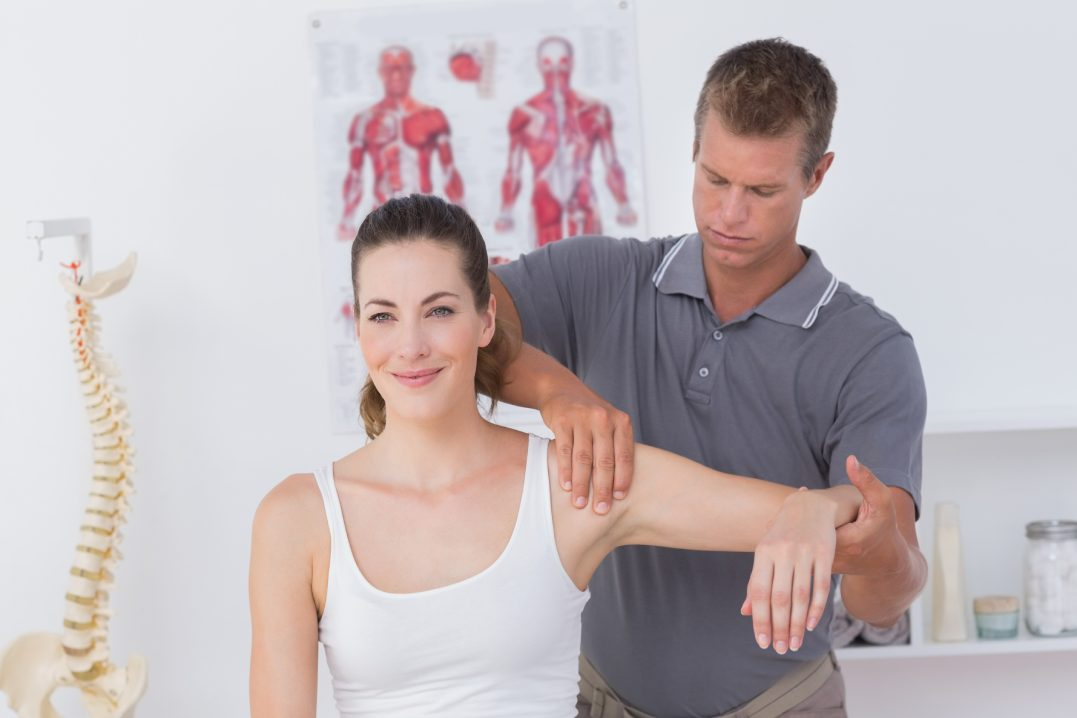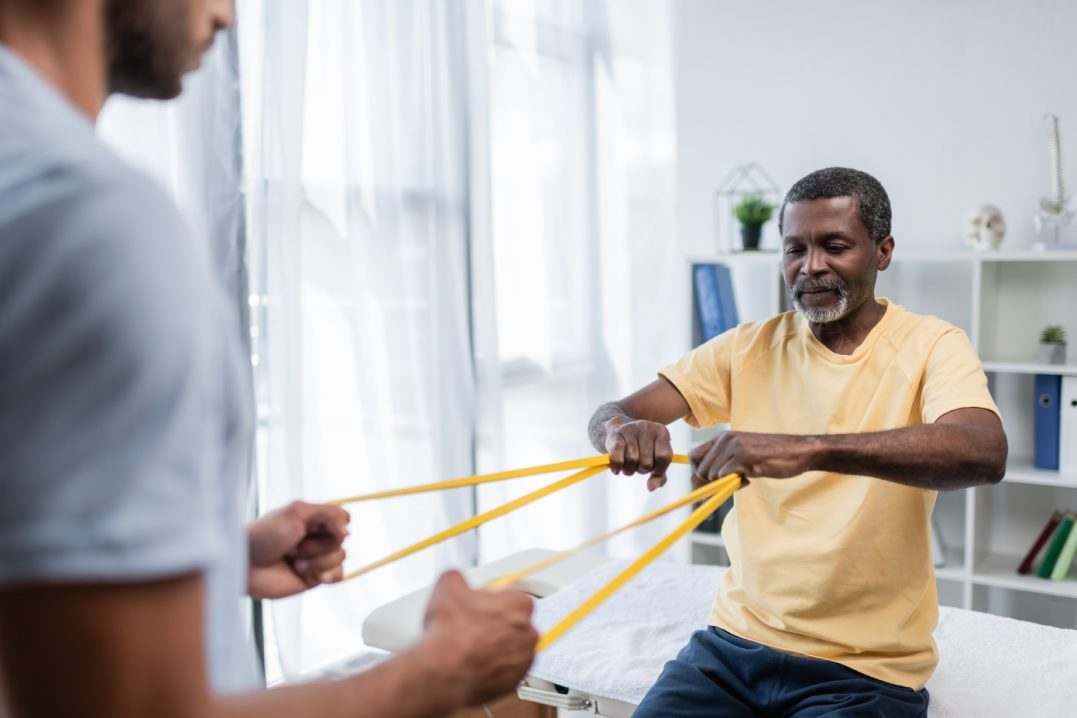
Early Post-Surgery Phase
In the first few weeks after your surgery, you will likely get started on gentle and professionally-assisted exercises to start the healing process. The sooner you start moving, the smoother your recovery will be!
Breathing and Circulation Exercises
Maintaining healthy circulation and preventing blood clots are key goals in this early stage of recovery. Your rehab specialist will teach you deep breathing exercises to support your lungs and circulation.
You may also use ankle pumps or other devices to keep your blood moving and prevent clots during the time immediately after surgery when you are less active.
Range of Motion Exercises
In the first weeks after surgery, you will also start exercises intended to maintain joint flexibility and prevent stiffness from setting in. These exercises will be gentle, therapist-guided, and tailored to your physical needs and pain level. Examples of the type of ROM exercises you may use include the following: Ankle pumps, wrist rotations, knee bends, and passive exercises performed by the physical therapist:
Isometric Exercises
Isometric exercises refer to activities that use the muscles without moving the joints. This approach is often preferred for post-surgical rehab because they help to keep the muscles strong without stressing the site of the surgery. Examples of these activities your physical therapist may include in your treatment plan are quad sets, glute squeezes, and abdominal
Walking and Ambulation
As your recovery progresses, you will begin to work on getting around. At first, this process may include using assistive devices or walking under the supervision of your physical therapist. Over time, however, as you gain strength, you will be able to move longer distances and may be able to gain more independence of movement.

Mid to Late Stage
Even weeks or months after your surgery, you will likely still need the support of a physical therapist in order to heal completely. Here are some of the types of exercises you may use to regain health and mobility in the mid to late stages of your post-surgical rehabilitation.
Strength Training
Regaining your strength is an important step in your recovery. To this end, your physical therapist will begin assigning you light resistance or bodyweight exercises. The goal of these exercises is to rebuild the muscles around the surgical area that can become atrophied due to disuse. Your therapist will help you identify and focus on specific muscle groups to help you heal effectively and return to the life you love more quickly.
Cardiovascular Exercises
Your physical therapist may also support your post-surgical rehabilitation by helping you to strengthen your heart. Cardiovascular exercises for this type of recovery will usually include low-impact activities that can strengthen your heart without stressing your surgical site.
Balance Exercises
Depending upon where you had your surgery, you may require assistance in regaining your balance and stability to prevent falls while you recover. Exercises such as standing on one leg, using balance boards, certain types of walking and other activities can help you improve your coordination and balance after your surgery.
Functional Activities
Finally, as you recover, you will want to return to your daily activities. Your physical therapist can help you with exercises that are relevant to your normal routine. You may start with simple movements and gradually increase the complexity of the movements as you continue to heal. Examples of functional activities that you may practice with your therapist are the following: Sitting and standing up from a chair, climbing stairs, lifting objects, putting objects on a shelf, and more.

Advanced Rehabilitation Phase
Finally, as you heal, you will enter the advanced phase of rehabilitation. In this phase, you will return to the physical fitness and sports training goals that you had before your surgery. Your physical therapist can help guide you through this phase so you come out the other side ready to excel at the sports and personal fitness goals you have set for yourself.
Progressive Resistance Training
Progressive resistance training involves gradually increasing the amount of resistance you can use to strengthen your muscles. Usually, this training involves using weights, resistance bands, or machines.
Sports Training
If you are an athlete or a sports-loving individual, you may want to return to specific sports or fitness activities. Your physical therapist can support this goal by offering you exercises and training that mimics the skills you will need to succeed in your chosen sport.
At In Touch NYC Physical Therapy, we make it our goal to walk you through the entire post-surgery rehabilitation process. From the early stages when you are just getting moving again, to the final stages, when you are seeking a personal trainer, we offer it all. Book an appointment at one of your convenient NYC locations and discover healing from the inside out.



